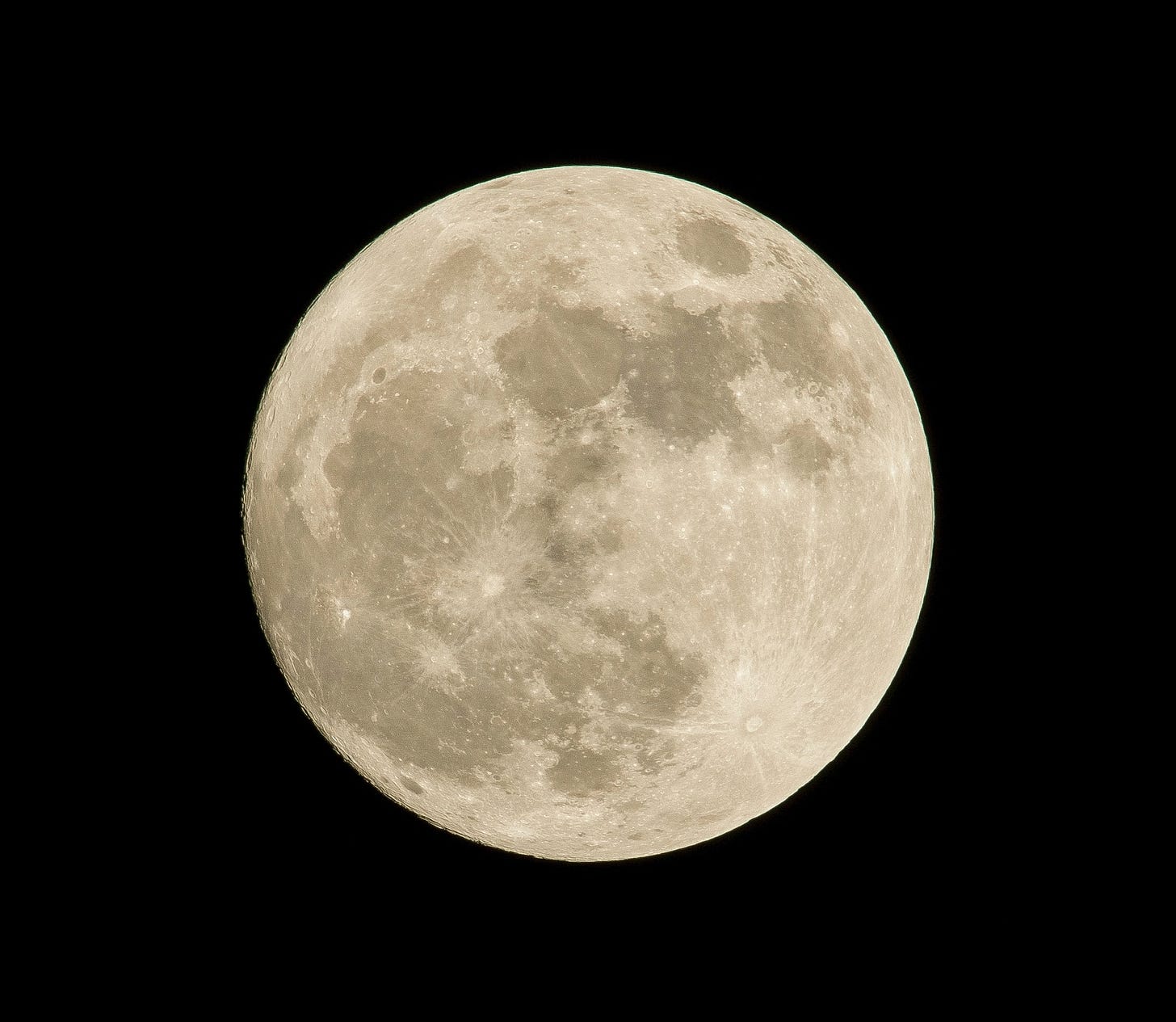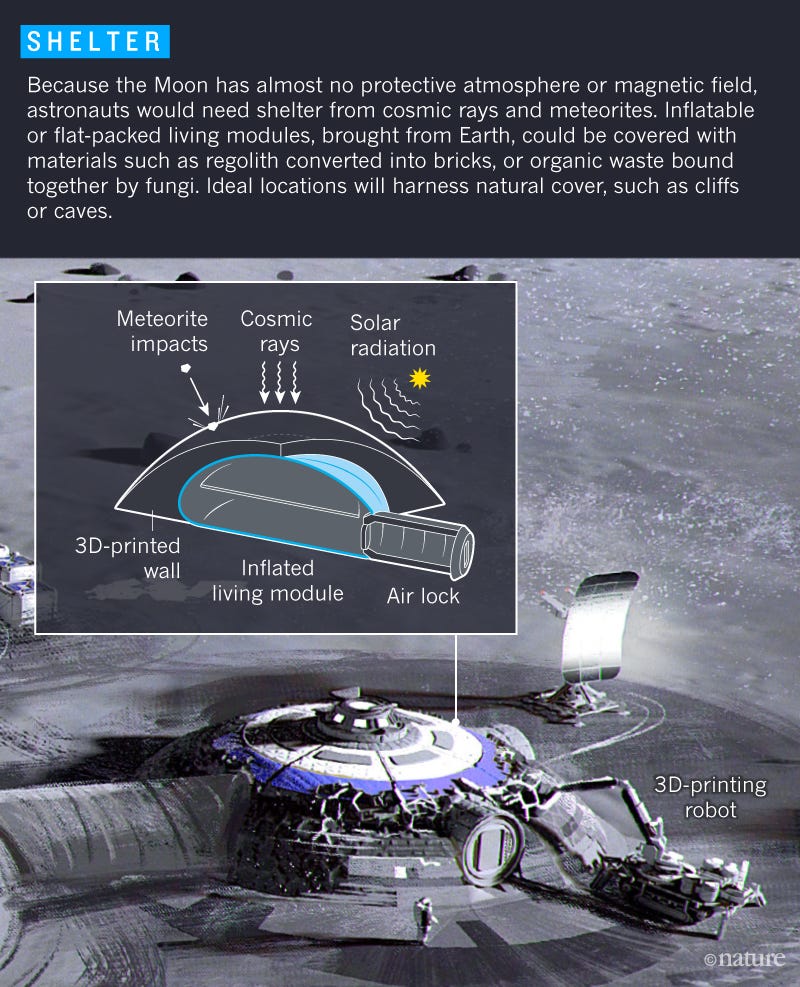There’s a very important meeting coming up that you probably didn’t know about. It’s called the Global Space Exploration Conference and it takes place in Russia in mid-June. This conference, among other things, gives national space programs the opportunity to connect with contractors and other governments to collaborate on projects ranging from satellites to space stations. This meeting, in particular, is extremely exciting because Russia and China are expected to announce joint plans for a lunar base. Not just a lander and a rover like we’ve sent up in the past; but a full-fledged complex on the moon. I’m sure we’ve all thought about making bases on other planets, but if we actually went to do it, what would it take, and what are some of the roadblocks that we’d run into along the way. [1]
The first question is where would we go? The Moon is much, much smaller than Earth; but it’s still pretty big. It’s roughly 4 times larger than the United States. For ease of access, our best bet would be near the equator. This is because the Moon’s equator is pretty much parallel with its orbit. That means, when traveling there, we would already be lined up with the equator and could fall into an equatorial orbit without using extra fuel. Unfortunately, there’s not much to see there. For the most sightseeing for your lunar dollar, you should head for the north and south poles. These have the most water (ice) deposits and thus could most easily support human life.
Water on the moon is useful for a lot of reasons. The first being obvious: rocket fuel. Oh were you thinking to drink? Yeah okay, fair we’ll start with that. The water on the poles can be broken down into oxygen to breathe and refined to drink. Additionally, as you may remember from your chemistry class, water is two parts hydrogen one part oxygen. If we use it to make oxygen, we’re left with pure hydrogen. This, along with excess oxygen, can be used to make rocket fuel very similar to what we use on Earth. This is a massive benefit. If we can make fuel to get home while on the moon, we only need to carry half the fuel up. This saves weight, space, and most importantly, cost. This technology also enables the moon to be a stopping point for travel to deep space. Mars trips starting from the Moon could carry a fraction of the fuel compared to those starting from Earth. The fuel, reduced gravity, and lack of atmosphere all make these journeys easier.
Now that we have options for location, let’s make the base. We’ve talked about this before but the two largest problems with anywhere but Earth are lack of atmosphere and the fact that they don’t have an atmosphere. Stay with me. Without an atmosphere, there’s no breathable air, and therefore nothing to… breathe. This obviously would suck. 2+ minutes without oxygen and you’re toast. We’ve thankfully developed a workaround for this: space suits! These are pressurized to feel like Earth and have breathable air. Talk about two birds. Without an atmosphere, there is also no protection from the Sun’s radiation. This would be deadly if exposed to for extended periods of time (~1 month) so if we expect our space buddies to stay on the Moon much longer than that we’ll need to find a way around it. There are a lot of theories on how to mitigate this. The best one that we’ve been able to think of is to go underground. This will provide protection from the Sun during normal operations and insulate the base to be more thermally efficient.
As far as what the base would look like? Probably a dome. Unfortunately, there’s not much room for any other design because it would need to be pressurized. This is the same rationale behind submarines. They’re shaped like tubes for two reasons: aerodynamics and withstanding pressure. Sharp corners are by far the weakest shapes for anything pressurized. They create what are called “stress concentrations” that can fail more easily. As such, any vessels that are pressurized (submarines, lunar bases, planes, etc.) are designed to have as many rounded corners as possible. Furthermore, because there are significant space constraints on rocket ships, the bases would likely be folded together and blown up upon arrival. Like some sort of lunar bouncy castle. [1]
So at this point, we know our address, what the house looks like, and a decent value proposition for why we’d like to move there. And we can breathe and drink. The only thing left is food. Lunar cuisine is often severely underwatered. Even with an extremely complex palate, it would be hard to get accustomed to the grey, dusty, slightly uranium-like taste of Lunar crops. Lest we make our little natural satellite even more difficult to get accustomed to, we should probably bring our own food. Nature.com provides a lovely discussion into the most suitable foods for our base. We have to go with what we know, and astronauts have already completed successful experiments on the ISS growing leafy greens like lettuce. Therefore, it would be prudent to stay in the same food group. Out of all our options therein, there is really only one that provides significant enough nutrition to be sustainable: Kale. I know that may be sad for some of you, as Kale is very divisive, but the good news is if you actually went to the Moon you’d be pretty distracted by the other, much scarier, stuff we talked about. Also, I was joking about nutrition on Mars—it’s actually not that bad.
Thank you for reading this week’s edition of It’s Not Rocket Science. Thank you to all of you new and old for being a part of the community, we’ll see you next week!
Check out last week’s newsletter here.
For more details…





